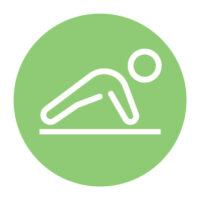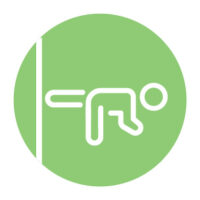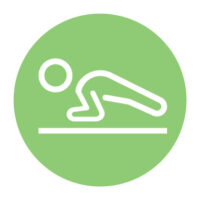Get Up and Join the Movement
As we emerge from the doldrums of winter hibernation and COVID-19-related inertia, it’s important to remember that exercise is good medicine and there’s no better time than now, to get moving again.
“There isn’t a chronic condition that can’t be better managed with an appropriate dose of exercise,” asserts Dr. Cedric Bryant*, President and Chief Science Officer at the American Council on Exercise. “This requires good interaction with your physician, an ability to listen smartly to your body and the realization that some exercise is always better than none.”
He recommends fostering good muscular fitness and enhancing strength, flexibility and balance with the exercise routine shown below. The 15-minute investment of time needed to complete one set of 8 to 15 repetitions for each exercise provides beginners with “the minimum effective dose needed to elicit a very positive response,” says Dr. Bryant.
Add regular rounds of exercise that build endurance, helping improve the health of your heart, lungs and circulatory system. To achieve the best results, you should have enough breath to talk but not enough to sing during aerobic activities such as brisk walking or jogging, dancing, biking, swimming, climbing stairs, or playing basketball, tennis or the uber-popular pickleball. (Learn more about today’s fastest-growing sport in an upcoming newsletter.) Be sure and check with your healthcare provider before beginning an exercise program.
Dr. Bryant’s Essential Seven
 1. Pushups
1. Pushups
Benefits: Develop the large muscles of the chest and the back of arms
The basic incline pushup is done using a sturdy table or other solid surface about 3 feet high. Stand facing the table and place your hands on the edge (shoulder width apart) arms straight and elbows not locked. Walk your feet backward until your arms and body are in a straight line. Bend elbows and slowly lower chest to the edge of the table while inhaling. Keep body straight and rigid throughout the movement. Push body away from the table until elbows are extended but not locked. Exhale as you push up.
Benefits: Strengthens and tones the lower body
Stand with your feet slightly more than hip width apart, toes turned slightly outward, hands at sides with palms facing in. Pull shoulders down and back. Stiffen your core and abdominal muscles. Hold chest up and out, tilt head slightly up, shift weight back onto your heels while pushing hips toward the wall behind you.
Downward phase: Shift hips back then down to create a hinge-like movement at hips and knees. Try to control the amount of forward movement of the shinbones. Maintain tension in the core muscles and keep your back straight. Lower yourself until thighs are parallel or almost parallel with the floor. DO NOT go deep enough to cause pain. Make sure your feet don’t move, ankles don’t collapse in or out, knees remain aligned over the second toe, and body weight is evenly distributed between balls and heels of the feet.
Upward phase: Extend the hips and knees by pushing your feet into the floor. Hips and torso should rise together while heels are flat on floor and knees are aligned over the second toe. Continue extending until you reach the starting position.
Remember to inhale on the way down and exhale on the way back up.
Benefits: Targets muscles in the upper and middle back and improves stability of the spine
Holding a small weight in each hand and standing with feet hip-distance apart, bend at the waist. Your back should be parallel to the floor with a neutral, not rounded, spine. Extend arms toward floor, keeping knees slightly bent. Engage abs and squeeze shoulder blades together as you bend elbows back and bring weights to your torso. Keep arms close to your torso. Slowly lower the weights back to the starting position.
 4. Modified Single-Leg Deadlift
4. Modified Single-Leg Deadlift
Benefits: Strengthens and tones gluteals and helps improve balance
Position yourself by a wall or chair. Stand straight, with feet aligned with hips, and shift weight to right leg. Slowly bend forward at the waist while raising your left leg behind you until your torso and leg are both parallel to the floor. Keep your head up and arms straight, perpendicular to the floor. Lower your leg as you return to an upright position. Keep your leg straight at all times. Repeat all reps on one side, then switch legs.
Benefits: Increases shoulder strength and engages the core for stability
Stand upright and keep the back straight. Note: Beginners or those with back issues can perform this exercise seated. Hold a small weight in each hand at the shoulders, with an overhand grip. Thumbs are on the inside and knuckles face up. Exhale as you raise the weights above the head in a controlled motion. Pause briefly at the top of the motion. Inhale and return the weights to your shoulders.
 6. Calf Raises
6. Calf Raises
Benefits: Strengthen lower leg muscles, increase stability, balance and agility
Start by standing 6 to 12 inches away from a wall, facing it, with feet hip width apart. Extend arms to place your palms on the wall, level with chest or shoulders. Exhale and slowly lift heels off the floor, keeping knees extended without rotating your feet. Use your hands on the wall to support your body. Hold raised position briefly. Inhale and slowly lower heels back to the floor.
 7. Plank Pose
7. Plank Pose
Benefits: Strengthens the core and abdominals while increasing stability and balance
Modified version: Start in tabletop position with hands and knees on the floor. Walk your hands so your forearms and palms are facing down, keep shoulders and elbows aligned. Walk your knees away from your body until you feel your core and abdominals engaged. Keep torso straight and rigid, your body in a straight line from ears to knees with no sagging or bending, and with shoulders down, not creeping up toward your ears. You may keep your toes on the floor for extra support. Hold position for 10 seconds. Walk your knees back in, repeat. Over time, work up to 30, 45 or 60 seconds.
Sources/refer to these websites for more detailed descriptions on the exercises: American Council on Exercise, Verywell Fit, Women’s Health
*As President and Chief Science Officer at the American Council on Exercise, Cedric X. Bryant, PH.D and Fellow of the American College of Sports Medicine, stewards the organization’s exercise-science and behavior-change education. He earned both his doctorate in physiology and master’s degree in exercise science from Pennsylvania State University, where he received the Penn State Alumni Fellow Award, the school’s highest alumni honor.

 2.
2.  3.
3.  5.
5.